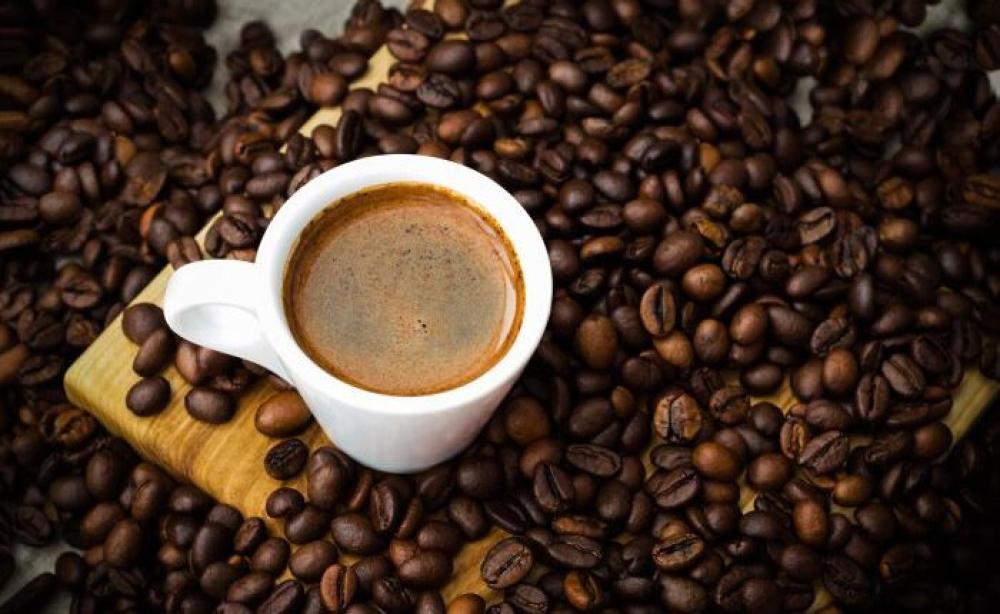Coffee is one of the most traded commodities in the world, with over 2 billion cups consumed daily. The coffee industry provides a livelihood for millions of people in the Global South. In 2025, global coffee production is expected to reach approximately 170 million bags (each weighing 60 kg), driven by increasing global demand for specialty and sustainable coffee. Production is concentrated in tropical countries with ideal climates for growing both Arabica and Robusta coffee beans. Fertile soils, suitable elevations (1,000–2,000 meters above sea level), and abundant rainfall provide an ideal environment for growth. In Saudi Arabia, where approximately 1.5 billion cups are consumed annually, specialty coffee has become a part of modern culture, with a focus on beans from countries such as Brazil, Vietnam, and Ethiopia. In this article, prepared specifically for the Coffee Wellbeing blog, we will review the top 10 coffee-producing countries in 2025 based on Food and Agriculture Organization (FAO) estimates and international statistics, focusing on their production, coffee varieties, and economic impact. We will also provide tips for choosing beans from these countries available in the luxury coffee , such as crops from Hound , Ash , and Doha , to achieve a luxury coffee experience at home or in the cafe.
1. Brazil: The world's coffee giant
Brazil is the world's largest coffee producer in 2025, with an estimated production of around 3 million tons, representing 40-45% of global production. Grown in regions such as Minas Gerais and São Paulo, the country produces significant quantities of Arabica (70%) and Robusta (30%). Brazilian coffee is characterized by its rich chocolate, caramel, and nutty flavors, with a full body and low acidity, making it ideal for espresso and cold brew. The Brazilian economy is heavily dependent on coffee, as the sector employs millions of workers and contributes around 2% of the GDP. For a coffee indulgence , try Hound Brasil Cascaval beans for a rich espresso, or use them in a cold brew for a refreshing experience.
2. Vietnam: The second largest producer and exporter of Robusta
Vietnam ranks second in 2025, with production estimated at approximately 1.7 million tons, with a focus on Robusta (95%) in regions such as the Central Highlands and the Mekong Delta. Vietnamese coffee is characterized by its strong, bitter flavors, with hints of dark chocolate and spices, making it ideal for espresso blends and instant coffee. Vietnam's coffee industry contributes 3% of GDP and employs more than 2.5 million people. Although Robusta is lower in quality than Arabica, it is pest-resistant and low-cost. For a coffee indulgence , choose a blend containing Vietnamese Robusta for a strong coffee, or use it in blends with Ethiopian Ash to balance the flavors.
3. Colombia: High quality and pure Arabica
Colombia ranks third with production estimated at approximately 885,000 tons in 2025, focusing on high-quality Arabica from regions such as Huila and Nariño. Colombian coffee is characterized by its balanced flavors, bright acidity, and fruity notes such as apple and caramel, making it ideal for drip coffee and espresso. The Colombian coffee industry contributes 8% of the GDP and employs more than 500,000 families. For a coffee indulgence , try Ash Colombia Supremo for a creamy latte, or use it in a cold brew for a refreshing summer experience.
4. Indonesia: Diversity and Tropical Coffee
Indonesia ranks fourth, with production estimated at approximately 761,000 tons in 2025, with a blend of Arabica and Robusta grown on islands such as Sumatra and Sulawesi. Indonesian coffee is characterized by earthy, spicy, and tropical fruit flavors, with a deep body and low acidity, making it ideal for espresso and cold brew. The industry contributes 2% of Indonesia's GDP and employs millions of smallholder farmers. For a coffee indulgence , choose Indonesian beans to brew a rich Sumatran coffee, or use them in blends with Hound to balance flavors.
5. Ethiopia: The birthplace of coffee and the finest Arabica
Ethiopia ranks fifth with production estimated at approximately 483,000 tons in 2025, with a focus on Arabica in regions such as Yirgacheffe and Sidamo. Ethiopian coffee is characterized by its floral, fruity, and citrus flavors, such as jasmine, berry, and lemon, making it ideal for drip and cold brew coffee. The industry contributes 5% of Ethiopia's GDP and employs more than 15 million people. For coffee indulgence , try Dhuha Yirgacheffe to prepare a floral drip coffee, or use it in cold brew for a refreshing experience.
6. Honduras: Rising Quality in Central America
Honduras ranks sixth, with production estimated at approximately 476,000 tons in 2025, focusing on Arabica in regions such as Copán and Opalaca. Honduran coffee is characterized by its balanced flavors, moderate acidity, and notes of apple, cherry, and caramel, making it ideal for espresso and drip coffee. The Honduran industry contributes 5% of the GDP and employs more than 1.2 million people. For a coffee indulgence , choose Honduran beans for a creamy latte or use them in blends with ash .
7. India: Diversity and Asian Coffee
India ranks seventh, with production estimated at approximately 367,000 tons in 2025, with a blend of Arabica and Robusta grown in regions such as Karnataka and Kerala. Indian coffee is characterized by its earthy, spicy, and chocolatey flavors, with a dense body, making it ideal for espresso and cold brew. The industry in India contributes 1% of GDP and employs millions of small farmers. For a coffee indulgence , try Indian beans for a spicy coffee, or use them in a cold brew with Torani sauce.
8. Uganda: Africa's Growing Coffee
Uganda ranks eighth, with production estimated at approximately 360,000 tons in 2025, with a focus on robusta in regions such as the Great Lakes. Ugandan coffee is characterized by its strong, bitter, and earthy flavors, making it ideal for espresso blends and instant coffee. The industry contributes 2% of Uganda's GDP. For a coffee indulgence , choose a blend containing Ugandan robusta for a strong brew.
9. Peru: Organic and Sustainable Coffee
Peru ranks ninth, with production estimated at approximately 350,000 tons in 2025, with a focus on organic arabica in regions such as Cusco and Cajamarca. Peruvian coffee is characterized by its balanced flavors, moderate acidity, and hints of orange and nuts, making it ideal for drip coffee and espresso. The industry contributes 2% of Peru's GDP. In the luxury of coffee , try Peruvian beans for a healthy organic coffee.
10. Mexico: Smooth Latin Coffee
Mexico ranks tenth, with production estimated at approximately 340,000 tons in 2025, with a focus on Arabica in regions such as Chiapas and Veracruz. Mexican coffee is characterized by its smooth, nutty, and citrusy flavors, making it ideal for drip and cold brew coffees. The industry in Mexico contributes 1% of the GDP. For a coffee indulgence , choose Mexican beans for a smooth, refreshing coffee.
Frequently Asked Questions About Coffee Production
1. What is the largest coffee producing country in 2025?
Brazil, with a production of about 3 million tons, has been the world's leading producer for decades.
2. What is the difference between Arabica and Robusta in production?
Arabica (70% of global production) is high quality and rich in flavour, while Robusta is more resistant and lower quality, and is used in instant coffee.
3. Does climate affect coffee production?
Yes, climate change such as drought or heavy rains affects production, especially in countries like Ethiopia and Indonesia.
4. What is the best coffee for espresso?
Brazilian or Colombian coffee such as Hound Brazil or Ash Colombia , thanks to its thick body.
5. Is organic coffee better?
Yes, organic coffee from countries like Peru or Ethiopia is better for your health and the environment, as it is grown without chemical pesticides.
6. How can I buy coffee from these countries?
At Luxury Coffee , we offer beans from the best producing countries, such as Ethiopia or Brazil , with free shipping and fast delivery.
7. What is the impact of coffee production on the economy?
Coffee production contributes 1-2% of GDP in countries such as Colombia and Ethiopia, and employs millions of people worldwide.
In 2025, Brazil remains the coffee giant, followed by Vietnam, Colombia, and other countries contributing to a global industry worth hundreds of billions. Each country offers unique flavors that reflect its soil and climate, making coffee a global cultural and economic experience. At Luxury Coffee , we offer you the opportunity to explore these flavors through specialty beans and high-quality brewing tools. Join the specialty coffee lovers in Saudi Arabia and enjoy a cup of coffee that tells the story of an entire country. Shop at Luxury Coffee now to get the best coffee you desire.

